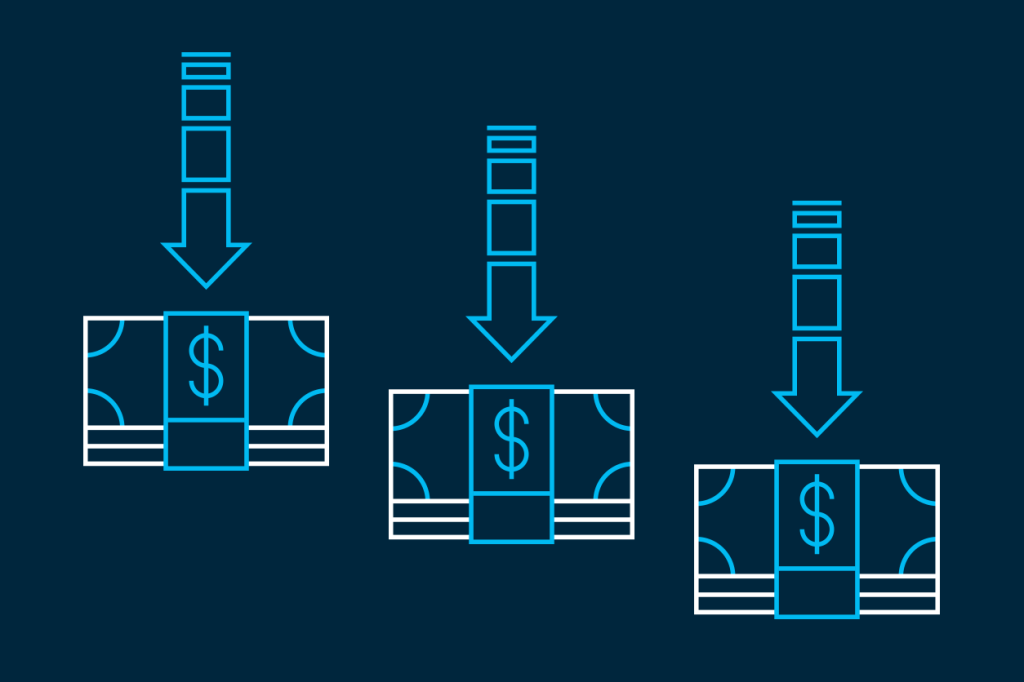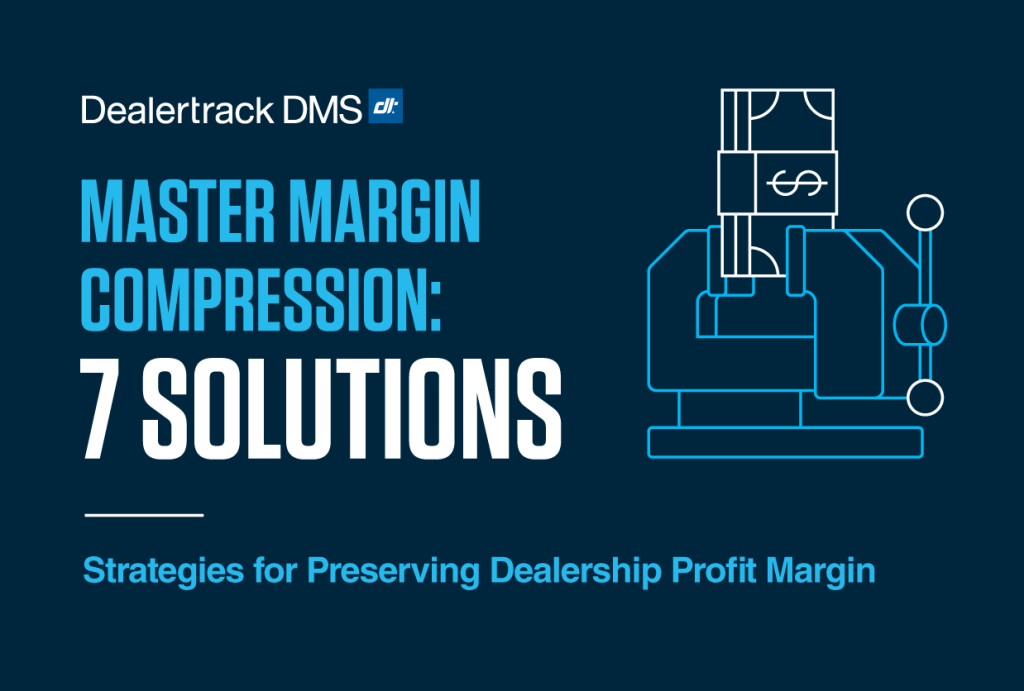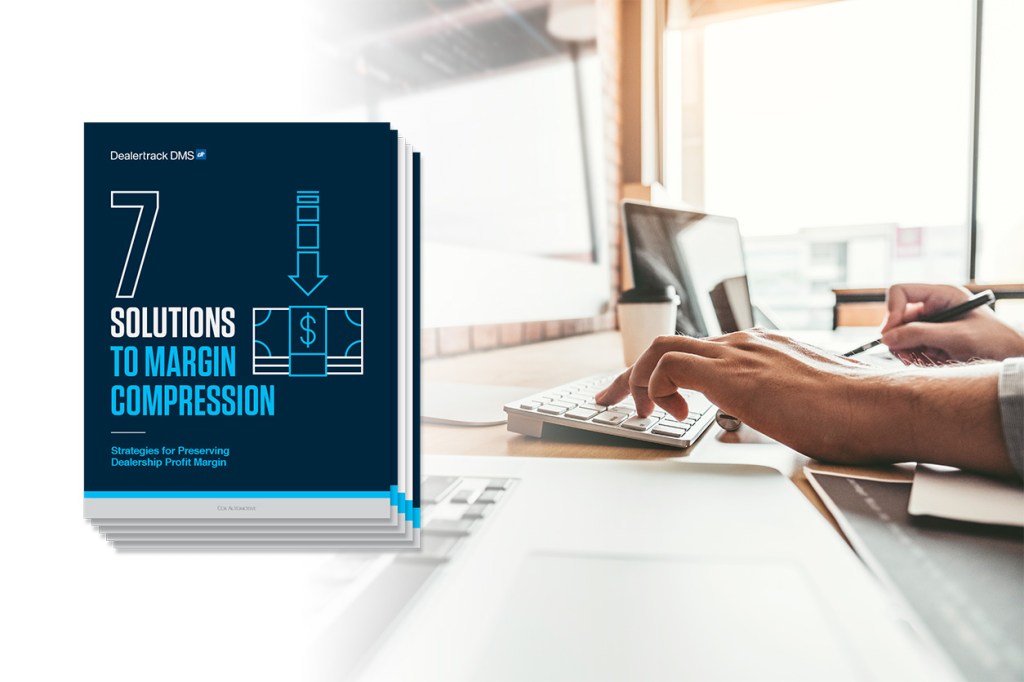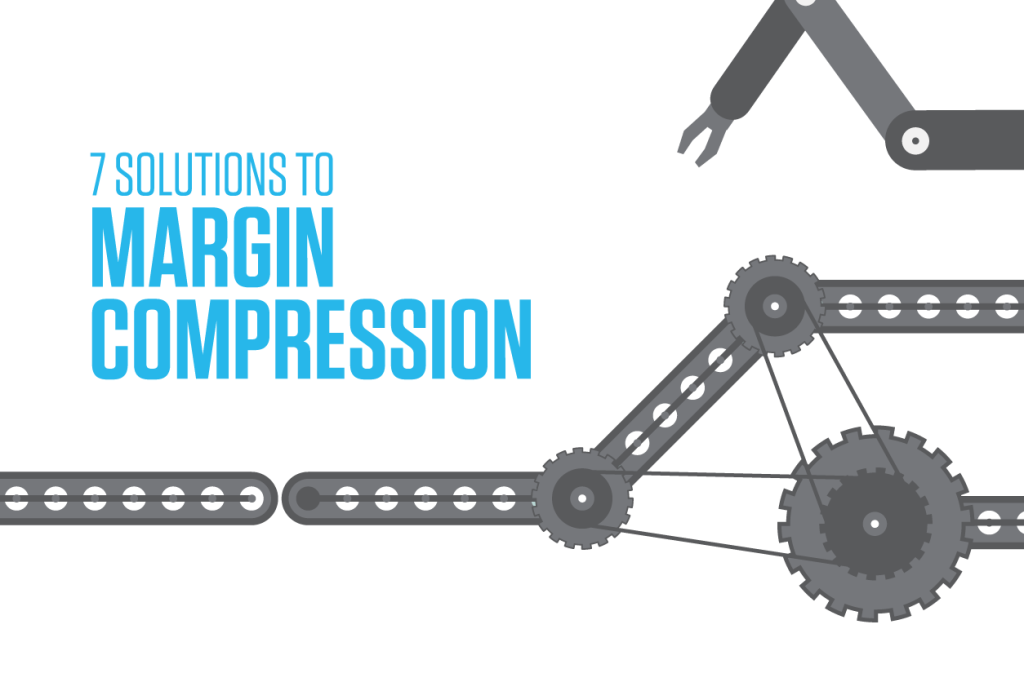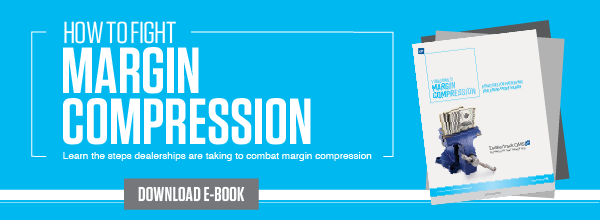Sell more, make more.
The formula for dealership profits used to be pretty straightforward. Managers that focused on increasing sales volumes could logically expect to see higher profits. Times have changed. According to a recent report from the National Automobile Dealers Association (NADA), for the first time in a decade dealerships on average experienced operational losses.* The culprit: margin compression.
Scouring the Daily Operating Control (DOC) and other financial reports for answers about where to cut costs is a start. But it’s likely that key metrics that affect margins are not included. Dealerships need to expand what data points they incorporate in their analyses of financial performance to uncover the root causes of margin compression.
Managers are better able to make strategic, data-driven decisions by adding metrics from these key areas:
Expenses
Keeping track of operating expenses such as advertising and headcount is a standard accounting practice. Giving meaning to those figures requires benchmarks that can be tracked and analyzed. According to Mandi Fang, vice president and general manager of Dealertrack DMS, the most effective way to uncover the impact of expenses on gross profit is to automatically generate trend reports from the dealership management system (DMS).
“To really get the perspective you need to take action from this data, compare your performance against the benchmarks month over month to understand where you can do more with fewer resources,” said Fang.
Marketing and advertising expenses are also an area where a fresh look can pay dividends. The first step is to take a deeper dive into the existing customer database.
Instead of spending on broad-based campaigns to carpet the potential market, it makes sense to target specific customers who are ready to replace their current vehicles and already have an affinity for the dealership.
Inventory and Asset Aging
The amount of time vehicles sit at a dealership affects cash flow. Fang recommends creating a weekly inventory age report that highlights the top 10 most-aged assets. Look for trends to identify why the vehicles are not moving, such as price sensitivity, upgrade packages, or other contributing factors.
“Most dealers are amazed at what they find with vehicles sitting on a lot for months and excessive warranty claims,” observed Fang. “Using the weekly report to hold department heads accountable to investigate aged assets can bring major gains to your operational efficiency.”
In an interview with CBT News, Dale Pollak, executive vice president at Cox Automotive and founder of vAuto, notes, “Something’s happened in the last two years that I know objectively and empirically to be true … an average vehicle loses its ability to make a positive return on investment [at] somewhere between 30 to 40 days.”**
According to Pollak, up to one-third of a dealer’s new and used vehicle inventory is typically over-age, which ties up capital that could be reinvested in more profitable units. He recommends making “investment-minded” inventory decisions for new and used vehicles based on retail prospects. Then focus on quickly getting vehicles ready for retail to reduce holding costs and improve front-end gross potential.
If used cars are not turning efficiently, it is important to analyze relevant data points such as appraisals, recon costs, pricing, and time to market to determine opportunities for improvement.
Fixed Operations
About half of a dealership’s profits are usually generated from fixed operations. As margins on new and used vehicles fall, the service and parts departments can be a way to make up lost revenue. The main factor affecting profitability is the ability to maintain consistent, efficient utilization of resources.
Kevin LeSage, director of digital marketing for Autotrader, recommends verifying the accuracy of data used to track productivity in the service center to get an accurate view of where to make improvements. For example, the benchmark at most dealerships for technician productivity is 90–95%. If something looks off in performance metrics, verify that sound processes are in place to capture data.
“Technician productivity has more to do with the shop’s loading and scheduling than it has to do with the technician’s ability or performance,” noted LeSage. “Having an accurate understanding of your technician productivity rate can help you realistically assess their bandwidth and capacity for additional work or figure out what tasks that are draining their efficiency can be reassigned.”
Service departments often measure capacity by the number of scheduled appointments. A better metric is evaluating in a week what hours the shop is open, the aggregate staffing hours of service technicians and average time allotment per service type. Then you can realistically evaluate the team’s bandwidth to set goals for the number of services performed every week.
With targets in place for services performed per week, marketing activities can be created to support demand generation. For example, to increase the number of oil changes, series of email blasts featuring promotional offers and links to an online scheduling tool can help boost appointments.
An audit of the service technician dispatch process can also uncover opportunities to maximize the return on each appointment by ensuring lower-level maintenance items, such as oil changes, are not handled by senior-level staff.
Inspection rates are another metric that can drive higher profits. Are service technicians upselling appropriate additional service requests (ASRs)? You won’t know unless you have benchmarks in place to assess results. Additional training and expectation-setting may be all it takes to boost follow-up appointments.
F&I Sales
Tracking the health of F&I sales can uncover opportunities to improve revenue. Metrics to analyze include the average transaction amount, product penetration, product index (number of products per deal), and profit per vehicle retailed (PVR).
According to Tony Troussov, a seasoned automotive industry expert who focuses on the importance of F&I sales, dealerships retain about 70 to 80 cents of every dollar generated through F&I.
“Focus has shifted to improving (F&I) in the wake of margin compression,” said Troussov. “Now there’s a lot more discipline and dealerships are paying attention to the numbers.”
He recommends engaging the F&I team to assess customers’ buying habits and trends, including previous deals and service histories on trade-ins, to craft strategies to overcome customer objections.
Evaluating how F&I options are presented to customers can also reveal ways to boost sales. Instead of offering one item at a time in sequence, bundling F&I products into three or four packages from which customers can select simplifies the sales process and boosts product index metrics.
Final Thoughts
Incorporating these missing metrics into the assessment of dealerships’ margin compression issues is just a starting point. The new and used vehicle market is volatile. Monitoring and reacting daily to real-time data is necessary to hold teams accountable for their performance. Setting benchmarks and using collected data to drive strategic decisions is the best course to mitigate issues and improve margins.
Want to learn more? Click here to download the eBook “7 Solution to Margin Compression: Strategies for Preserving Dealership Profit Margin.” You’ll get an in-depth look at margin compression and steps dealerships can take to combat the problem.
* Lutz, Hannah. “Auto dealers losing money on operations, NADA says.” Automotive News, 2019.
** CBT News. “The Most Effective Way to Reduce Margin Compression at Your Dealership – Dale Pollak, vAuto.” 2019.

